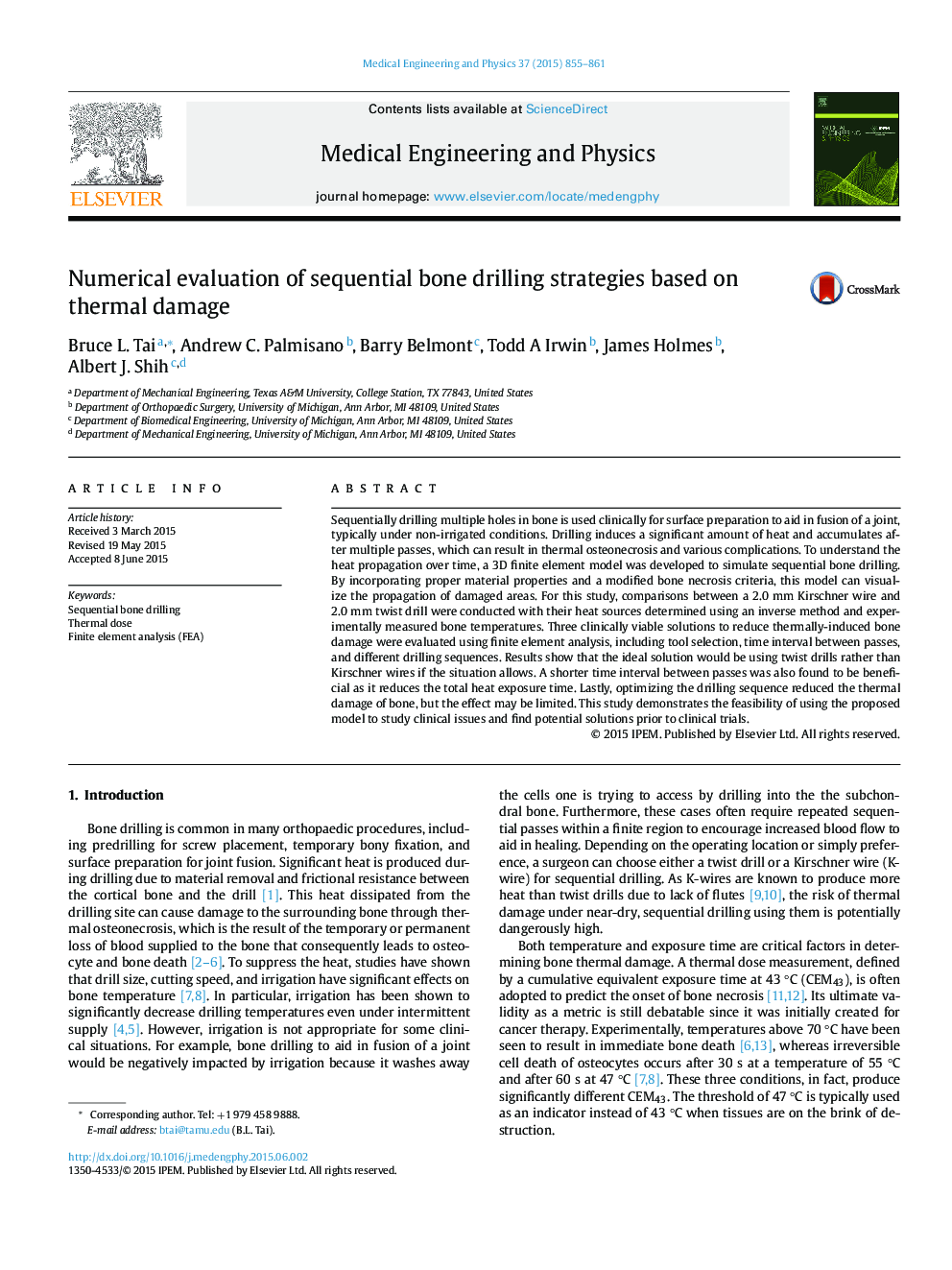| کد مقاله | کد نشریه | سال انتشار | مقاله انگلیسی | نسخه تمام متن |
|---|---|---|---|---|
| 875648 | 910790 | 2015 | 7 صفحه PDF | دانلود رایگان |
• We established a 3D model for temperature distribution during sequential bone drilling.
• We created a modified thermal dose for bone thermal necrosis.
• We incorporated the model and the thermal dose to predict bone damage in sequential drilling.
• Three clinically viable strategies were examined and compared using the models.
• Sequence planning was found to be a feasible solution to minimize the bone damage.
Sequentially drilling multiple holes in bone is used clinically for surface preparation to aid in fusion of a joint, typically under non-irrigated conditions. Drilling induces a significant amount of heat and accumulates after multiple passes, which can result in thermal osteonecrosis and various complications. To understand the heat propagation over time, a 3D finite element model was developed to simulate sequential bone drilling. By incorporating proper material properties and a modified bone necrosis criteria, this model can visualize the propagation of damaged areas. For this study, comparisons between a 2.0 mm Kirschner wire and 2.0 mm twist drill were conducted with their heat sources determined using an inverse method and experimentally measured bone temperatures. Three clinically viable solutions to reduce thermally-induced bone damage were evaluated using finite element analysis, including tool selection, time interval between passes, and different drilling sequences. Results show that the ideal solution would be using twist drills rather than Kirschner wires if the situation allows. A shorter time interval between passes was also found to be beneficial as it reduces the total heat exposure time. Lastly, optimizing the drilling sequence reduced the thermal damage of bone, but the effect may be limited. This study demonstrates the feasibility of using the proposed model to study clinical issues and find potential solutions prior to clinical trials.
Journal: Medical Engineering & Physics - Volume 37, Issue 9, September 2015, Pages 855–861
